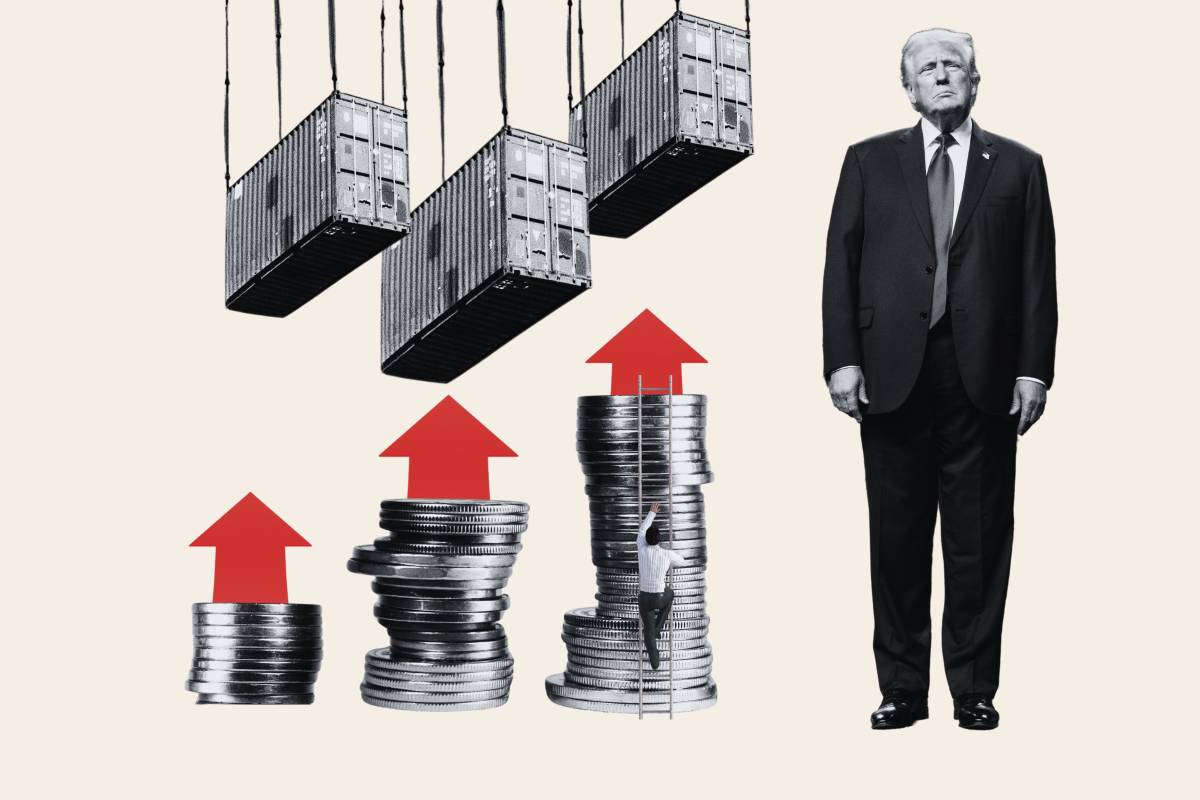Japan's Shrinking Economy: The Pre-Tariff Situation

Table of Contents
Demographic Challenges and a Shrinking Workforce
Japan's economic slowdown is significantly intertwined with its unique demographic landscape. A rapidly aging population coupled with an extremely low birth rate is creating a shrinking workforce and placing immense strain on the economy.
Aging Population and Low Birth Rate
Japan boasts one of the world's highest life expectancies, currently around 85 years, but its birth rate remains stubbornly low, hovering around 1.3 children per woman. This demographic time bomb is leading to several critical economic consequences:
- Decreased workforce participation: A smaller pool of young workers means a shrinking labor force, impacting productivity and economic growth. The percentage of working-age individuals in the population is steadily declining, creating labor shortages across various sectors.
- Strain on social security systems: An increasing elderly population necessitates greater spending on healthcare and pensions, placing significant pressure on the government budget and potentially leading to higher taxes or reduced public services.
- Reduced consumer spending: As the population ages, consumer spending patterns shift. Older generations tend to save more and spend less, dampening overall economic demand.
The shrinking working-age population is a significant drag on economic growth, requiring immediate policy interventions.
Immigration Policies and their Limitations
While immigration could potentially mitigate the shrinking workforce, Japan's immigration policies have historically been restrictive. The country has struggled to attract and integrate foreign workers, resulting in persistent labor shortages.
- Restrictions on immigration: Strict visa requirements and a relatively closed immigration system limit the influx of skilled and unskilled workers needed to fill labor gaps.
- Difficulties integrating foreign workers: Language barriers, cultural differences, and a lack of support networks can hinder the successful integration of immigrants into the Japanese workforce and society.
- Cultural barriers: A relatively homogenous society has historically made it challenging for immigrants to fully integrate, leading to potential social friction and difficulties in attracting foreign talent.
Compared to other developed nations like Canada or Australia, which have more open immigration policies, Japan's approach has limited its ability to address its demographic challenges effectively. Reforming immigration policies is critical for Japan's long-term economic health.
Stagnant Productivity and Technological Innovation
Another key factor contributing to Japan's shrinking economy is the relatively stagnant productivity growth and a slower pace of technological innovation compared to other advanced economies.
Lack of Investment in R&D
Japan's investment in research and development (R&D) has lagged behind many other developed nations. This lack of investment translates into fewer technological breakthroughs and a slower adoption of new technologies in various sectors.
- Lower R&D spending per capita: Compared to countries like the US, South Korea, and Germany, Japan's R&D spending per capita is comparatively lower, hindering the development of cutting-edge technologies.
- Fewer technological breakthroughs: Lower R&D investment directly leads to fewer innovations and a slower pace of technological advancement, reducing competitiveness in the global market.
- Slower adoption of new technologies: Bureaucratic hurdles and a reluctance to embrace new technologies can further hinder productivity growth and economic dynamism.
R&D spending as a percentage of GDP remains below that of many competitor nations, highlighting a critical need for increased investment in innovation.
Bureaucracy and Regulatory Hurdles
Complex regulations and bureaucratic hurdles often stifle innovation and business growth in Japan. Slow approval processes, complex regulations, and a lack of flexibility hinder entrepreneurship and discourage risk-taking.
- Complex regulations: Navigating the Japanese regulatory environment can be challenging and time-consuming for businesses, particularly small and medium-sized enterprises (SMEs).
- Slow approval processes: Lengthy bureaucratic procedures for obtaining permits and licenses can delay projects and deter investment.
- Lack of flexibility: Rigid regulations often lack the flexibility needed to adapt to changing economic conditions and technological advancements.
Streamlining regulations and fostering a more business-friendly environment are essential steps to boost innovation and productivity.
Deflationary Pressures and Consumer Spending
Persistent deflationary pressures have significantly impacted consumer spending and overall economic growth in Japan.
Weak Consumer Confidence
Several factors contribute to weak consumer confidence and low spending in Japan.
- Uncertainty about the future: Concerns about job security, stagnant wages, and economic uncertainty deter consumers from spending.
- Stagnant wages: Despite economic growth in certain sectors, wage growth has remained relatively stagnant for a significant portion of the population.
- High household debt: High levels of household debt can also restrain consumer spending, leaving less disposable income for purchases.
Boosting consumer confidence is paramount to stimulating economic demand.
Impact of the Yen's Value
Fluctuations in the value of the Yen have a significant impact on Japan's economy, affecting both exports and imports.
- Impact on export competitiveness: A strong Yen can make Japanese exports less competitive in the global market, impacting economic growth.
- Increased import costs: Conversely, a weak Yen can lead to higher import costs, potentially increasing inflation.
- Effect on inflation: The interplay between the Yen's value and import/export prices directly influences inflation rates, impacting consumer spending and investment decisions.
Managing the Yen's value is a crucial aspect of macroeconomic policy in Japan.
Conclusion
Japan's shrinking economy before the potential impact of tariffs is a complex issue stemming from the interconnected challenges of demographic pressures, stagnant productivity, and deflationary trends. The shrinking workforce, low birth rates, restrictive immigration policies, lack of R&D investment, bureaucratic hurdles, weak consumer confidence, and fluctuations in the Yen's value all contribute to a sluggish economic environment. These factors have created a cumulative effect on economic growth, highlighting the need for comprehensive and multifaceted policy solutions. Understanding the pre-tariff challenges of Japan's shrinking economy is crucial for formulating effective solutions. Continue exploring the intricacies of this complex issue to gain a deeper understanding of Japan's economic future and the necessary strategies to revitalize its economic growth.

Featured Posts
-
 50 000 Ultraviolette Tesseract
May 17, 2025
50 000 Ultraviolette Tesseract
May 17, 2025 -
 Tiffany Trump And Michael Boulos Welcome First Child A Look At The Trump Family Tree
May 17, 2025
Tiffany Trump And Michael Boulos Welcome First Child A Look At The Trump Family Tree
May 17, 2025 -
 Thibodeaus Endorsement St Johns Basketballs Rising Trajectory
May 17, 2025
Thibodeaus Endorsement St Johns Basketballs Rising Trajectory
May 17, 2025 -
 Supercharged Seaweed Condo Cracks And Corporate Crisis Todays Top Stories
May 17, 2025
Supercharged Seaweed Condo Cracks And Corporate Crisis Todays Top Stories
May 17, 2025 -
 Celtics Vs Knicks Your Guide To Live Streaming And Tv Coverage
May 17, 2025
Celtics Vs Knicks Your Guide To Live Streaming And Tv Coverage
May 17, 2025
